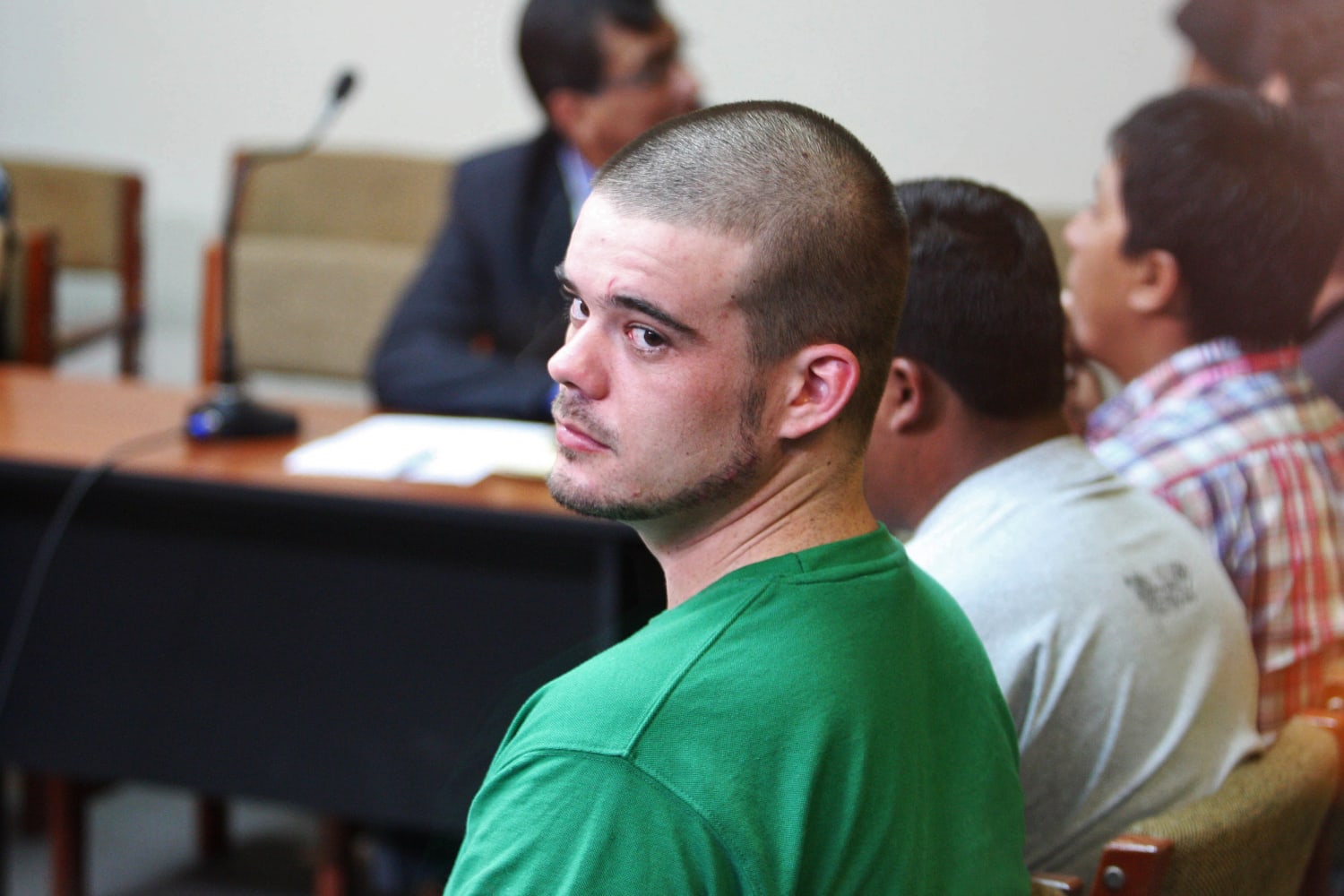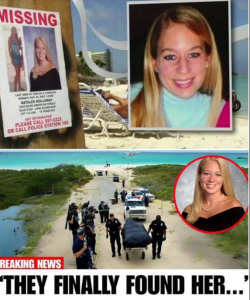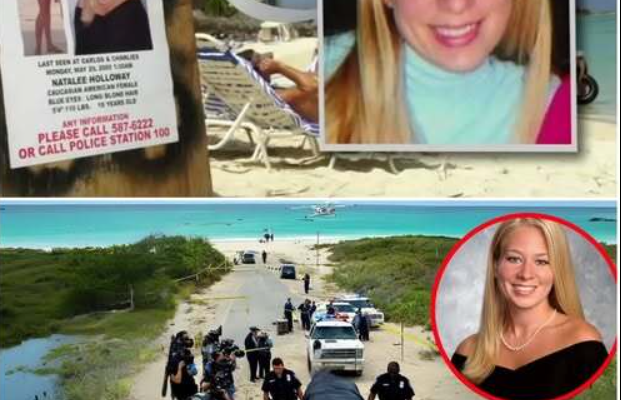


In 2005, a young woman disappeared on a tropical island, igniting one of the most haunting and widely followed missing person cases in modern American history. The story of Natalee Holloway — a bright, outgoing 18-year-old from Alabama — captured global attention when she vanished during a high school graduation trip to Aruba. For nearly two decades, her disappearance remained a painful mystery, surrounded by false leads, media frenzy, and unanswered questions.
But now, twenty years later, new revelations have finally brought the truth to light. And it’s far darker — and more heartbreaking — than anyone could have imagined.
A Celebration That Turned Into a Nightmare
The year was 2005. Natalee Holloway had just graduated from Mountain Brook High School in Alabama. Like many seniors, she and her classmates were looking forward to a celebratory trip before heading off to college. Aruba, a sunny Caribbean paradise, seemed like the perfect place to relax, dance, and create unforgettable memories.
On the final night of the trip, Natalee and her friends went to a popular bar and nightclub called Carlos’n Charlie’s. There, she was last seen leaving with three young men — one of whom would become the central figure in this case: Joran van der Sloot.
When Natalee failed to show up for her flight home the next morning, panic set in. Her belongings and passport were still in her hotel room. A massive search began immediately.
The First Suspect
Joran van der Sloot, then 17 years old, was quickly identified as the last person seen with Natalee. He initially claimed that he had dropped her off at her hotel and never saw her again. But over the following days, his story changed multiple times.
Despite the suspicion surrounding him, the lack of solid evidence made it difficult for Aruban authorities to press charges. Joran and two brothers, Deepak and Satish Kalpoe, were arrested, questioned, and released — repeatedly.
The world watched as the investigation seemed to go in circles. Media outlets covered every development, often sensationalizing the case. Natalee’s parents, especially her mother Beth Holloway, became tireless advocates, traveling to Aruba, speaking to the press, and begging for answers.
A Mystery That Wouldn’t Go Away
Months turned into years, and still, Natalee was never found. Countless tips, rumors, and alleged confessions came and went. Divers searched waters around the island, and investigators followed leads as far as South America.
But Joran remained at the center of suspicion. He gave several bizarre and contradictory statements — at one point even claiming that Natalee had collapsed on the beach and he had panicked and disposed of her body at sea. He later retracted those claims, saying he had lied to get attention.
Without a body or hard evidence, the case remained legally unsolved. In 2012, Natalee was declared legally dead, though her family continued to seek the truth.
A Killer Reveals the Truth
The chilling breakthrough came years later — not in Aruba, but in Peru. In 2010, Joran van der Sloot was arrested for the brutal murder of Stephany Flores Ramírez, a young Peruvian woman. The murder occurred exactly five years to the day after Natalee disappeared.
Joran eventually confessed to killing Flores after she discovered information about the Holloway case on his laptop. He was sentenced to prison in Peru, where he remains to this day.
While in prison, Joran made several claims about Natalee’s fate. Most were inconsistent, manipulative, or clearly self-serving. But in 2023, facing extradition to the United States on extortion charges, he finally provided a chilling confession as part of a plea deal.
The Confession: What Really Happened
According to court records and Joran’s own confession, the night Natalee disappeared was not an accident. He admitted to taking Natalee to a secluded area after leaving the nightclub. When she rejected his sexual advances, he became violent, hitting her and causing fatal injuries.
He then disposed of her body, describing the location and method in detail. This confession matched certain clues investigators had long suspected but had been unable to prove.
For Natalee’s family, hearing these details was excruciating — but it was also the first time they heard the truth from the man responsible.
A Mother’s Fight for Justice
Throughout these 20 years, Beth Holloway has become a symbol of unwavering strength. She appeared on news networks, pressed authorities, and kept her daughter’s story alive even when the media moved on to other cases.
When Joran confessed, Beth addressed the public:
“Today, I can tell you with certainty that I know exactly what happened to Natalee. It’s not the ending we hoped for, but it’s the truth. And after 18 years, the truth matters.”
Her statement reflected both heartbreak and relief. The long nightmare had finally ended — but not in the way anyone had hoped.
Why It Took So Long
Many wonder why it took nearly two decades for this confession. Several factors complicated the case:
-
Lack of physical evidence: Natalee’s body was never recovered, making prosecution nearly impossible at the time.
-
Jurisdictional challenges: The crime happened in Aruba, but Joran fled and committed crimes in other countries.
-
Joran’s manipulation: He repeatedly lied to investigators and the media, deliberately creating confusion.
-
International legal processes: Extraditions, appeals, and coordination between countries slowed everything down.
This case has since become a textbook example in criminal justice courses about the complexities of international investigations.
The Impact on Aruba and Beyond
The Holloway case left a deep scar on Aruba, a country heavily dependent on tourism. For years, it was overshadowed by negative press and scrutiny over its handling of the investigation. It also sparked widespread conversations about travel safety, especially for young people abroad.
In the United States, the case influenced missing person investigations, media coverage ethics, and how families advocate for victims. The Holloway family’s relentless pursuit of answers inspired many others to keep fighting for their loved ones.
Justice — At Last?
Although Joran van der Sloot was not tried for Natalee’s murder in Aruba, his confession was part of a binding legal agreement in the United States, where he faced charges for extorting the Holloway family years earlier. He had demanded money in exchange for false information about Natalee’s remains.
In 2023, he pleaded guilty to extortion and wire fraud, receiving a 20-year U.S. prison sentence to be served after his Peruvian term. In court, he admitted what he had done to Natalee.
While this does not amount to a murder conviction for her case, the confession and legal record mean the Holloway family — and the world — finally has closure.
A Tragic Legacy
Natalee Holloway’s story is more than just a high-profile crime. It represents the agony of families who live in limbo, trapped between hope and despair. Her case highlighted the importance of international cooperation in criminal investigations and the dangers young travelers can face abroad.
It also raised questions about how the media covers missing persons — and how certain stories capture public attention for years.
For Natalee’s friends and family, she will always be remembered not for the way her life ended, but for who she was: intelligent, kind, and full of promise. She had planned to attend University of Alabama and study pre-med. Her life was just beginning.
Looking Forward
With Joran’s confession, the mystery that haunted two nations is finally over. But the emotional scars remain. Beth Holloway has devoted years to helping other families of missing persons through advocacy and support networks. Her strength has turned unimaginable pain into purpose.
The case also serves as a sobering reminder: justice can take years — sometimes decades — but truth has a way of emerging. And when it does, it can be both devastating and healing.
Final Thoughts
Twenty years ago, Natalee Holloway disappeared on a beautiful Caribbean night. What followed was a storm of fear, grief, and endless questions. Today, we finally have answers.
It’s worse than many hoped. But it is the truth. And for the Holloway family, truth — even painful truth — is a kind of justice.
Natalee’s legacy endures, not just as a victim, but as a catalyst for change in how missing person cases are pursued, how families are supported, and how the world understands the cost of silence.


